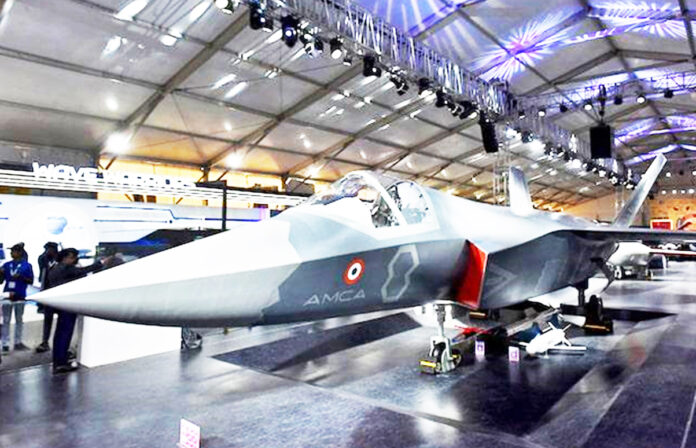Operation Sindoor in May 2025 was a resounding testament to India’s aerial dominance over Pakistan. This feat significantly bolstered the nation’s confidence and contributed to the achievement of its strategic objectives.
RACE FOR STEALTH AND ENGINE PROWESS
India has in Rafale a 4.5 generation jet. The global rise of fifth- and sixth-generation fighter jets necessitates India’s indigenous development of stealth capabilities. While China, Russia, and the US have fifth-generation aircraft, and China is testing sixth, India’s progress, led by HAL, faces concerns. In February 2025, the Chief of Air Staff expressed a lack of confidence in HAL’s commitment due to persistent delays in the delivery of the 83 Tejas Mark 1 aircraft ordered by the Indian Air Force in 2021, with deliveries initially expected to begin in mid-2024.
The IAF’s current 31 squadrons (under 600 jets) fall significantly short of its 42-squadron (756 aircraft) operational requirement, highlighting the pressing need to enhance air force strength. A key decision involves prioritising domestically produced aircraft versus interim foreign acquisitions to address this capability gap, a choice with long-term strategic and economic consequences for India’s defence readiness.
Operation Sindoor has significantly increased global attention on India’s defence capabilities, demonstrating the effectiveness of its systems against threats and sparking interest in its digital technology advancements and indigenous defence production. This heightened international interest presents opportunities and challenges for India’s defence sector in meeting expectations and strengthening domestic manufacturing.
KAVERI ENGINE?
The DRDO’s GTRE is developing the Kaveri, a low-bypass, twin-spool turbofan engine. Conceived four decades ago to power India’s Tejas LCA, this advanced engine features a flat-rated design and a twin-lane FADEC system with manual override for enhanced reliability. However, it was delinked from the Tejas program in 2008 due to its failure to meet critical performance requirements.
India’s Kaveri engine project struggled due to a lack of initial aerothermal and metallurgical expertise, which hindered the use of key materials. Following the 1998 sanctions, limited R&D support, reliance on Russia for testing, personnel and material shortages, and a failed partnership with Snecma further delayed progress. Consequently, the underpowered and overweight engine forced the Tejas to use GE engines.
Despite initial issues, the Kaveri Derivative Engine’s development for UCAVs (Ghatak, AMCA), naval ships, and Kaveri 2.0 is ongoing with private sector help and recent advances. Increased government funding prioritises these indigenous gas turbine engines due to public demand to lessen import dependency.
The Indian Navy is developing the 12 MW Kaveri Marine Gas Turbine (KMGT) for smaller warships after it was separated from the Tejas project. The successfully tested, shaft-modified KMGT offers boost power.
INDIA’S AMCA
India has approved an advanced medium combat aircraft (AMCA) prototype and, breaking tradition, invited bids from both public and private Indian companies like Tata or L&T. This move aims to involve the private sector in developing India’s fifth-generation jet, a significant step for its defence sector.
The unchallenged air dominance of Western nations faces a potential threat due to the development of India’s Advanced Medium Combat Aircraft (AMCA). This aircraft could mark a pivotal shift in global air power dynamics.
INDIA’S DEFENCE IMPERATIVE
India has prioritised air superiority for national security. Initially considering F-35 jets, India opted for Russia’s S-400 over US systems (Patriot and THAAD) due to its superior capabilities against stealth targets and comprehensive air dominance.
India’s pursuit of a non-US missile defence system resulted in the cancellation of a US F-35 deal. Russia then proposed co-developing the SU-57. Learning from the costly and limited technology transfer of the Su-30 MKI deal, India shifted focus to indigenous development, initiating the AMCA project.
The Su-30 MKI deal, intended to significantly enhance India’s air power through advanced jets, technology transfer, and local manufacturing, demonstrated the drawbacks of being primarily an arms importer.
The Su-30 MKI experience highlighted the risks of foreign dependence, prompting India to prioritise self-reliance.
India’s AMCA program, a fifth-generation stealth fighter, is vital for air power and strategic autonomy due to security concerns and the limitations of foreign technology. This phased indigenous project, including Mark 1 (partially imported tech) and Mark 2 (fully indigenised with future AI and hypersonic missile integration), will enhance India’s air power, potentially shift the regional military balance.
India’s AMCA project highlights its growing technological strength and commitment to defence self-reliance, prompting a reassessment of global strategic engagements with India. The US’s changed stance on offering F-35 jets after the AMCA announcement demonstrates the perceived significance of India’s indigenous fifth-generation fighter program.
The AMCA’s design prioritises advanced stealth, offering a significant advantage over contemporaries with its drastically reduced radar cross-section from both frontal and lateral aspects, which is crucial for survivability.
While the Russian SU-57 excels in close-range dogfights, India’s indigenous AMCA offers broader superiority as a 5.5-generation fighter. It surpasses the SU-57 in stealth, sensors, and electronic warfare due to revolutionary AI-powered systems rivalling early sixth-generation designs. This AI acts as an onboard “supercomputer,” enhancing threat identification, target acquisition, and electronic countermeasures. Operationally, the AMCA rapidly detects and analyses radar, uses its radar for active jamming, and achieves target lock up to ten times faster than conventional systems.
This integrated capability provides AWACS-like situational awareness, enabling proactive engagement and improved survivability.
India’s AMCA program aims to develop a cutting-edge fifth-generation stealth fighter with indigenously developed advanced weaponry, projecting power beyond its borders. The program has two phases:
One, which incorporates some imported systems to validate core capabilities, and Phase 2, the revolutionary phase
Mark 2 signifies India’s technological self-reliance, with entirely indigenous design and manufacturing, including radar and engines projected to outperform foreign counterparts. This variant will also integrate features such as an AI-assisted copilot, enhancing pilot capabilities.
ASTRO MARK III
India’s Astro Mark III missile, with a 340km range (nearly half the F-22 Raptor’s combat radius), will significantly enhance the AMCA fighter jet’s offensive capabilities. This pairing enables the AMCA to target critical enemy assets, such as early warning aircraft and fuel tankers, at long distances, potentially crippling their operations. Modified Astro Mark III missiles will be carried internally by the AMCA to maintain stealth, with a capacity of up to four missiles.
The claim that no enemy aircraft, including those of the US, could enter Indian airspace undetected highlights a significant advancement in India’s aerial warfare capabilities through the AMCA program. This suggests advanced sensors, electronic warfare, and air-to-air weapons enabling layered defence, long-range engagement, and air superiority, acting as a strong deterrent.
The AMCA will gain a significant air-to-ground threat capability with the potential integration of a hypersonic Brahmos missile (1000-1400 km range, Mach 7).
* K. Siddhartha is an earth and space scientist.
Naleen Chandra is an avionics expert and aircraft engineer.







